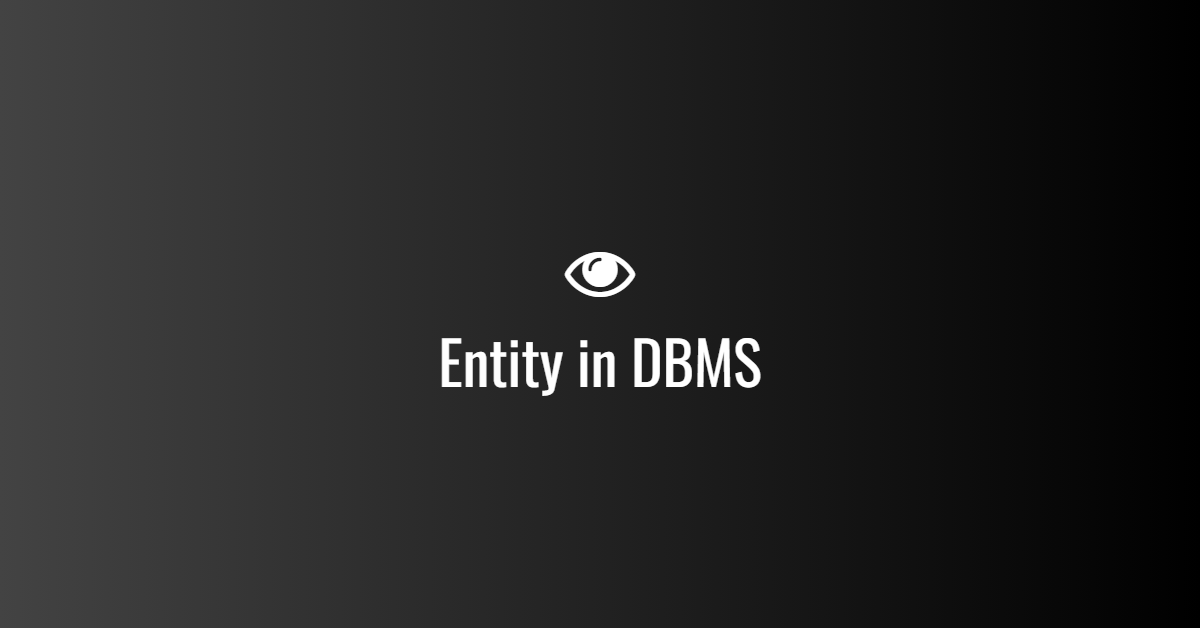
Entity in DBMS
1. What is an Entity?
An entity in a Database Management System (DBMS) represents a real-world object that has a distinct identity. It can be anything that exists physically or logically and can be stored in a database.
Example:
- A Student in a university database.
- A Car in a vehicle registration system.
- A Book in a library management system.
2. Types of Entities
1. Strong Entity
- An entity that can exist independently in the database.
- It has a primary key that uniquely identifies each record.
Example:
- Student (Student_ID, Name, Age) → Student_ID is the primary key.
Representation:
- Represented as a rectangle in the ER diagram.
2. Weak Entity
- An entity that cannot exist independently and depends on a strong entity.
- It does not have a primary key, but it has a partial key.
- It is connected to a strong entity through a relationship (with total participation).
Example:
- Dependent (Dependent_Name, Age, Employee_ID) → Employee_ID is a foreign key.
Representation:
- Represented as a double rectangle in the ER diagram.
3. Entity Set
- A collection of similar entities in the database.
- Example: All students in a university form a Student Entity Set.
Notation:
- Entity sets are represented by rectangles in an Entity-Relationship (ER) diagram.
4. Attributes of an Entity
Each entity has attributes that define its characteristics.
Types of Attributes:
- Simple (Atomic) Attribute: Cannot be divided further.
- Example:
Student_Name,Age.
- Example:
- Composite Attribute: Can be broken into smaller sub-attributes.
- Example:
Name(First Name, Last Name).
- Example:
- Derived Attribute: Derived from other attributes.
- Example:
Age(derived from Date of Birth).
- Example:
- Multivalued Attribute: Can have multiple values.
- Example:
Phone Numbers.
- Example:
- Key Attribute: Uniquely identifies an entity.
- Example:
Student_ID.
- Example:
5. Relationship Between Entities
Entities are connected through relationships in the database.
Types of Relationships:
- One-to-One (1:1): Each entity in Set A is related to one entity in Set B.
- Example: A Person has one Passport.
- One-to-Many (1:M): One entity in Set A is related to many entities in Set B.
- Example: A Teacher teaches many Students.
- Many-to-Many (M:M): Many entities in Set A are related to many entities in Set B.
- Example: Students enroll in multiple Courses.
6. Entity vs. Table
| Feature | Entity | Table |
|---|---|---|
| Definition | A real-world object with attributes. | A structured format to store entity data. |
| Representation | ER Diagram (Rectangle). | Rows & Columns in a database. |
| Example | Student entity with Student_ID, Name, Age. | Students table storing multiple records. |
7. Example ER Diagram
Scenario: University Database
- Entities:
Student (Student_ID, Name, Age)Course (Course_ID, Course_Name)
- Relationship:
Student Enrolls in Course(Many-to-Many)

8. Conclusion
- An entity is a real-world object stored in a database.
- Strong entities exist independently, while weak entities depend on others.
- Entities have attributes, and they form entity sets.
- Relationships define how entities are connected.




